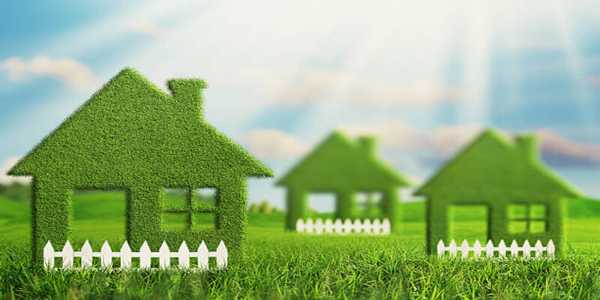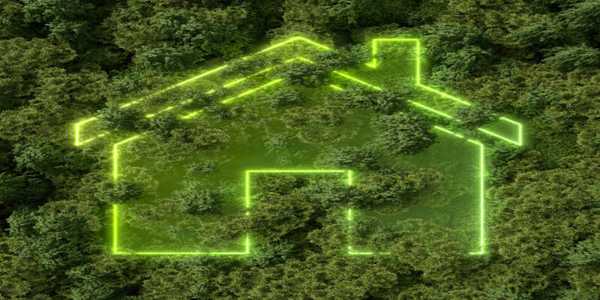The burgeoning phenomenon of biophilic design homes epitomizes a paradigmatic transmutation in conceptualising domiciliary environments. As metropolitan agglomerations increase, the necessity to reconstitute a symbiotic rapport with the natural world becomes paramount, engendering the advent of nature-connected living spaces. These abodes transcend mere visual allure, offering profound contributions to their residents' physiological and psychological homeostasis. This treatise delves into the prospects of biophilic real estate projects and their ramifications on futurist architectural paradigms.
Quintessential Tenets Of Biophilic Design
The nucleus of biophilic design homes resides in the interaction of natural elements within the constructed milieu. This encompasses the employment of autogenous materials, the maximization of heliacal illumination, and the infusion of verdure within the habitat. The desideratum is to engender nature-connected living spaces that buttress residents' emotional and physical vitality.
- Autogenous materials: The utilization of lignum, lithos, and other endogenous resources is paramount in biophilic real estate projects.
- Heliacal illumination: The amplification of natural luminescence is indispensable in biophilic design homes, where vast fenestrations and unencumbered spaces are quintessential.
- Verdure: The interaction of flora and hypomorphic walls is indispensable in crafting truly nature-connected living spaces.

Advantages Of Biophilic Real Estate Projects
The merits of biophilic design homes extend far beyond the superficiality of aesthetics. Empirical inquiries corroborate that nature-connected living spaces can attenuate existential stressors, ameliorate psychosomatic health, and augment cognitive productivity.
Physiological And Psychological Well-being
Residing in biophilic design homes has been correlated with an array of health benefits. The intrinsic nexus to nature can mitigate hypertensive conditions, alleviate anxiogenic tendencies, and foster holistic well-being. Consequently, individuals aspiring to optimize their existential quality progressively covet nature-connected living spaces.
Ecological Ramifications
Biophilic real estate projects frequently emphasize ecological sustentation. By incorporating energy-efficient designs and employing environmentally congruent materials, these undertakings minimize the anthropogenic impact of the construction process. This modus operandi benefits the biosphere and resonates with the ethos of those who opt for biophilic design homes.
Economic Viability
The burgeoning market for biophilic real estate projects is undergirded by an escalating cognizance of the value ascribed to residing in nature-connected living spaces. Dwellings that embody biophilic design principles typically command elevated market valuations and captivate purchasers who prioritize salubriousness and sustainability.
Illustrative Exemplars Of Biophilic Real Estate Projects
Many biophilic real estate projects globally exemplify the latent potential of this design philosophy. Biophilic design homes are being conceived to satiate the burgeoning demand for nature-connected living spaces from urbane lofts to sylvan domiciles.
- One Central Park, Sydney: An archetype of a biophilic design home, this project is adorned with vertical gardens and luxuriant verdure.
- Bosco Verticale, Milan: A preeminent biophilic real estate project, these residential aeries are enshrouded in arboraceous canopies, establishing a sui generis urbane sylva.
- The Spheres, Seattle: While primarily an occupational locus, The Spheres presages the future of nature-connected living spaces with their emphatic focus on botanical life and natural luminescence.
Challenges And Prospective Outlook
Despite the escalating allure of biophilic design homes, non-trivial challenges must be surmounted. Incorporating natural elements can be pecuniarily onerous, and maintaining these nature-connected living spaces necessitates meticulous calibration and maintenance.
Addressing Financial Barriers
A principal challenge in the genesis of biophilic design homes is the financial expenditure. Autogenous materials and sustainable technologies often entail exorbitant costs, rendering these nature-connected living spaces less accessible to the average resident. However, as the market for biophilic real estate projects expands, it is anticipated that monetary barriers will abate, rendering these homes more attainable.
Future Projections
Looking forward, biophilic real estate projects are likely to become a staple in urban development. As conurbations burgeon, the necessity for nature-connected living spaces will persistently drive innovation in architectural and design praxis. The future of biophilic design homes is resplendent, with potential advantages that transcend individual well-being and encompass broader ecological and economic implications.

Architectural Evolution In Biophilic Real Estate Projects
The architectural morphology of biophilic design homes is undergoing an ontogenetic transfiguration. It is characterized by the amalgamation of biophilic principles that underscore a synergistic consonance with the natural milieu.
Integration Of Biomorphic Forms
A defining attribute of biophilic design homes is the incorporation of biomorphic forms—configurations and motifs that are evocative of the natural world's intrinsic geometries. These forms transcend ornamental aesthetics, serving as a functional sine qua non in augmenting nature-connected living spaces by engendering a more osmotic and diachronic interface between the anthropogenic environment and the natural ecosystem.
Adaptive Use Of Space
The spatial choreography within biophilic real estate projects is predicated on fluidity and malleability, dynamically attuned to the vicissitudes of environmental and inhabitant exigencies. This adaptability manifests in polyvalent spaces that seamlessly coalesce the internal and external environments, engendering an immersive experience within nature-connected living spaces that is both holistic and autopoietic.
Vernacular And Localized Architecture
Biophilic real estate projects are increasingly embracing a vernacular architectural ethos, which entails the utilization of endemic materials and artisanal construction methodologies congruent with the local environment. This praxis augments the ecological veracity of biophilic design homes and fortifies the cultural inheritance and historiography embedded within nature-connected living spaces.
Technological Integration In Biophilic Design
The infusion of sophisticated technological paradigms in biophilic real estate projects is reconfiguring the interactivity between these domiciles and their surrounding natural matrices.
Smart Environmental Controls
Biophilic design homes have intelligent environmental controls that meticulously calibrate the indoor climate by emulating natural processes. These systems can modulate luminance, thermoregulation, and atmospherics in real time, cultivating an ambiance within nature-connected living spaces that is not merely congenial but intrinsically aligned with the circadian rhythms and phenological cycles of the surrounding biosphere.
Renewable Energy Integration
A pivotal aspect of biophilic real estate projects is the seamless incorporation of renewable energy modalities, such as heliacal and aeolian power, which not only attenuate the carbon efflux of these nature-connected living spaces but also engender a paradigm of autarkic and regenerative energy sustenance. The deployment of these technologies accentuates the commitment of biophilic design homes to environmental custodianship and ecological equilibrium.
Conclusion
The potential of biophilic real estate projects is boundless, offering a conduit to reestablish our ontological connection with the natural world in quotidian existence. Biophilic design homes and nature-connected living spaces are not merely transient trends; they signify a profound ontological shift in our perception and interaction with our domiciliary environments. As this movement ascends, integrating natural elements in residential design will likely become a cornerstone of contemporary architectural practice, paving the way for more salubrious, sustainable communities.